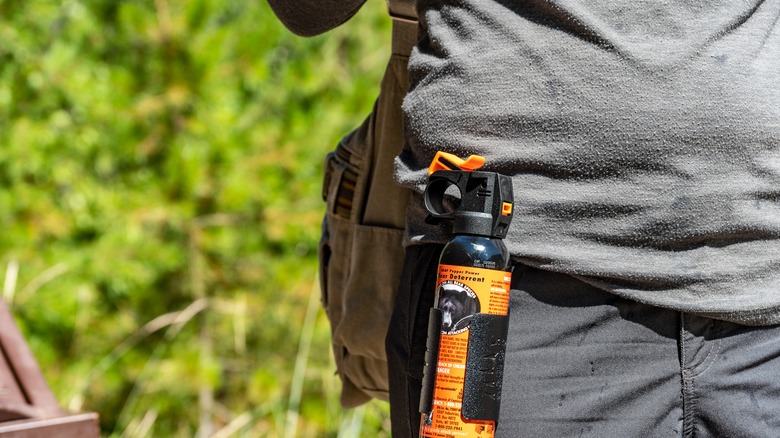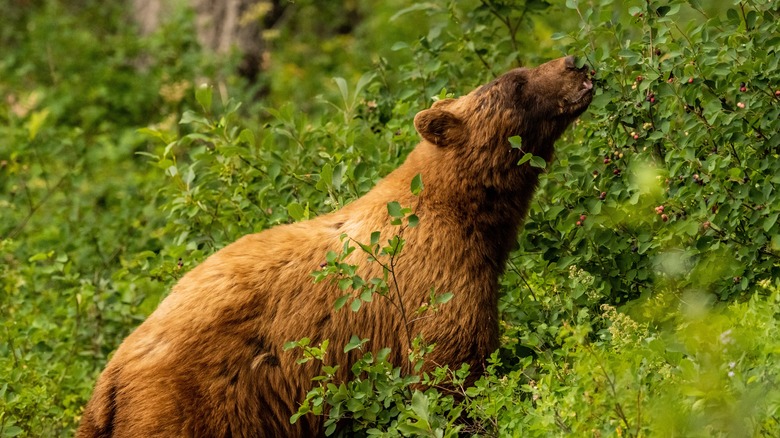Travel Guides Outdoor Adventures Hiking
Lexi Kassler
There is only one thing you need to know about nature — it’s as beautiful as it is indifferent to humans. This couldn’t be more true for Glacier National Park’s Huckleberry Lookout Trail in Montana.
This trail poses a challenge to even the most advanced of hikers. With its steep elevation gains, treacherous terrain, and prominent wildlife populations, you might wonder why someone would even want to brave this trail. However, you’ll understand once you get a look at the expansive vistas of Apgar Valley. Unfortunately, as beautiful as it is, this doesn’t make it any less dangerous. As you might have guessed based on the name, the trail is packed with huckleberry bushes. These just so happen to be a favorite calorie-dense snack of a certain furry brown bear — the grizzly bear.
Glacier National Park is said to have the highest density of grizzly bears in the continental U.S. (not including Alaska), and when huckleberries reach their peak ripeness in July, the chances of running into these berry-loving but dangerous animals increase.
This is why the National Park Service actually closes the Huckleberry Lookout Trail in late summer. This is to prevent contact between wildlife and humans as the grizzlies seek out more huckleberry bushes to fatten themselves up before winter sets in.
Come fully prepared for a hike on Huckleberry Lookout Trail

Lost_in_the_Midwest/Shutterstock
If you’re an experienced hiker or backpacker and you’re not put off at the prospect of coming face to face with grizzlies, then you need to take the opportunity to hike the Huckleberry Lookout Trail.
To prepare, you’ll need to pack a few things. The number one item you’ll need to bring is bear spray. However, knowing what kind to buy and how and when to use it is not always as straightforward. The Be Bear Aware Campaign recommends that hikers purchase a spray that lasts for at least seven seconds and has a range of 30 feet or more. It’s important to keep in mind that if you come into contact with a bear, never discharge bear spray unless it charges you.
Besides the bears, the trail itself is quite difficult. So you’ll want to bring along food for lunch and snacks, plenty of water for a full day’s hike, and sturdy shoes with comfortable socks. Make sure the food is wrapped and packed securely so as not to attract bears while hiking.
The hike to the lookout takes about three and a half to four hours, and you should allow yourself about an hour to rest and enjoy the view. The hike back takes a bit less time since you’re headed downhill, about three hours. A great way to spend a day outdoors.
Other trails to explore in Glacier National Park when it’s peak berry season

Kelly vanDellen/Shutterstock
If you arrive at Glacier National Park during peak berry season in the late summer, it might be disappointing to find out you can’t trek the Huckleberry Lookout Trail. However, there are plenty of other trails for you to explore that won’t put you at risk (or at least as much of a risk) of meeting a bear.
The Highline Trail is one of the best in Glacier National Park, and it offers similarly jaw-dropping views of the valleys and creeks below. It’s a little over 11 miles out and back and features both easy and challenging sections of trail, with one area requiring you to hold onto a cable as you scale a shelf carved into the side of a cliff. Apparently, danger is never far in Glacier National Park.
If you’re seeking something a little more family-friendly, look no further than Hidden Lake Overlook. This hike is only 2.8 miles, and you’ll get incredible views of alpine meadows and mountain peaks throughout your journey. There’s even a portion of the trail you might be able to spot mountain goats. Surely an exciting experience for kids and adults alike.

